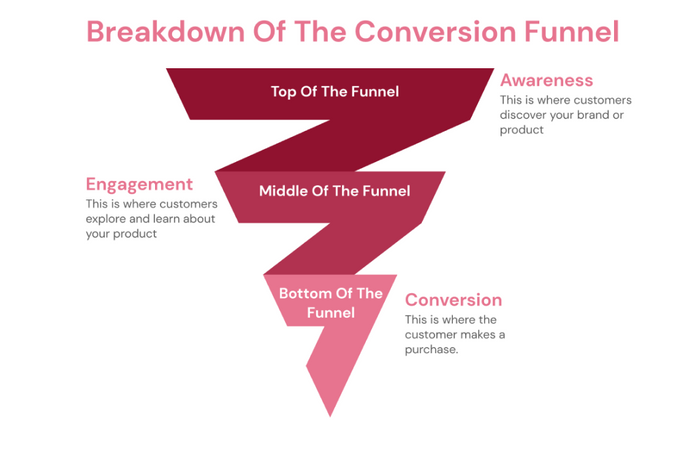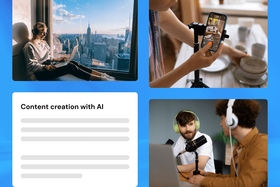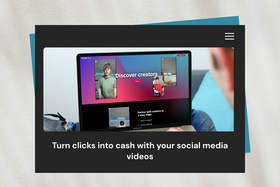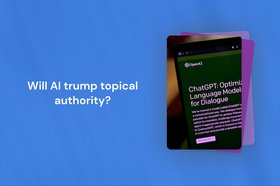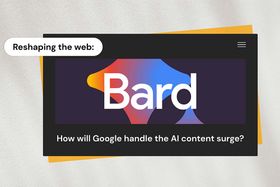How to create content that converts: 7 expert strategies
Use our strategies to transform your content into a powerful conversion tool that resonates with your audience and compels them to act.
Updated December 3, 2024
Many businesses struggle to create content that effectively converts visitors into customers. Often, this is because their bottom-of-the-funnel content, which should be driving conversions, doesn't engage users effectively. This can lead to missed opportunities and poor conversion rates, even on websites that attract lots of organic traffic.
In this article, I'll share seven proven strategies to help you bridge this gap and ensure that your content attracts visitors and persuades them to take action.
Key takeaways
- A website's content structure is crucial for converting traffic into sales.
- Identify what funnel stage each content piece targets.
- Make sure your calls-to-action (CTAs) support the user journey in terms of relevancy, funnel stage, intent, context, and value proposition.
- Add CTAs that target multiple funnel stages to every content piece.
1. Optimize your site structure
One effective strategy for creating content that converts is optimizing the structure of your site. Start by mapping out all your topics to understand which part of the conversion funnel they target—whether it's the bottom for users ready to purchase or the top for those just becoming aware of your brand.
» Discover how to optimize your site for conversions.
Then, identify the type of searches your audience might use. For example, somebody searching for a headless CMS may be looking for either a product page or a comparison of the top headless CMSs for SaaS companies. Use this information to decide what type of page you need to create for each topic.
Next, organize these pages in a way that naturally guides visitors toward conversion. Your site structure should be built like a funnel, with feature and product pages at the bottom, supported by guides and comparison pages in the middle, and broader informational articles at the top.
By structuring your site this way, you create a clear path for visitors to follow, which can enhance the user journey and ultimately lead to higher conversion rates.
» Discover proven conversion strategies to boost sales and ROI.
2. Create content Google understands
Google knows exactly what people search for and what they find valuable and helpful. By structuring your pages so that Google can understand the content, you can ensure users will grasp the information on your pages too.
Google earns over $200 billion annually from ads that send users to the bottom of the funnel. However, this revenue comes from less than 10% of searches—specifically, those with high transactional intent. Google displays ads only for these bottom-of-the-funnel searches. In other words, Google is built to convert traffic. They make money by helping users complete their search query goals. The entire internet is tailored to their guidelines and what they compensate.
To build your pages in a way that Google understands, use SEO effectively— even when creating your feature pages. If you're not using the right keywords or trying to be too clever with how you present your product, you're very likely to fail. Instead, do the research to understand what needs to be on every page to successfully convert traffic from those pages.
» Get perfectly SEO’d pages out of the box with Entail’s no-code page builder.
3. Understand the funnel stage each content piece targets
Knowing the funnel stage your content targets is key. It tells you what your audience needs, helping you to understand if they're ready to buy or just looking for information.
You can also use this knowledge to create compelling CTAs for each funnel stage. For example, an article on the dangers of hiking near San Francisco with a section on twisting your ankle could include a CTA for hiking shoes with good ankle support.
» Discover call to action examples that get real results.
Keep in mind that content for the top of the funnel isn't likely to convert users at the bottom of the funnel. For instance, a top-of-the-funnel article about the "best places to hike in San Francisco" may engage readers who are interested in this topic, but it's less likely to get them to buy hiking shoes.
4. Customize your CTAs to the specific intent behind each page
You need to tailor your CTAs to the specific intent and context of each content piece and even individual sections within it. For example, if a section in the same article about hiking trails near San Francisco mentions narrow paths beside cliffs, the CTA could suggest appropriate safety gear. This targeted approach ensures the CTA feels like a natural continuation of the user journey, not a random, out-of-place ad.
This is very similar to what Google does. Google shows you ads that are highly relevant to your search and rewards advertisers based on a Quality Score that includes relevance. So, the more relevant your ad is, the lower your cost per click and the higher the chances are that you'll appear in the search.
» Book a consultation with an SEO expert to identify conversion opportunities in your content.
5. Add multiple CTAs for different users and preferences
Because some articles can be long and extensive, you may have multiple opportunities to add CTAs catering to different user behaviors and preferences. Some users just skim through the page, so you may want a large CTA to grab their attention. Others read every single word in an article, so add contextual links to support their journey.
Different CTAs may target users at different stages of the conversion funnel. For example, a B2B company might include CTAs to book a demo, start a free trial, subscribe to an email list, or download a guide—all within the same content piece. This approach ensures that you're effectively engaging with readers at every stage of their journey and maximizing conversion opportunities.
6. Align your CTAs with your content and marketing goals
When selecting CTAs, ask yourself:
- What marketing goals are relevant to this piece of content?
- What value proposition bridges the gap between my content and achieving my marketing goal?
This value proposition is usually the copy you would use for your CTA. For instance, if your article is about how to create content that converts and your goal is to promote Entail's conversion rate optimization software, the value proposition should highlight how it can increase conversions.
Remember to use multiple CTA variations to accommodate different users' needs and increase the likelihood of conversion.
» Learn how to improve content marketing ROI.
7. Keep experimenting to refine your approach
As with all things in marketing, creating high-converting content takes constant experimentation. You need to test different elements to see what works.
You can do this on three levels:
- Relevancy: How do you select the marketing goal that's most relevant to this page?
- Likelihood of conversion: How likely is the user to convert based on the CTA? How relevant is it to their journey?
- Value proposition: Based on the specific copy or value proposition, how likely is the user to click on the CTA?
Testing multiple CTAs can be difficult on a large website with hundreds or thousands of pages. However, you can start by focusing on bottom-of-the-funnel pages with the highest potential for conversion and pages that get the most traffic.
Make the user journey your priority
Creating content that converts is all about seamlessly guiding visitors through the funnel with relevant CTAs that support them in completing their journey. You have to help the user find what they're looking for, solve their challenges, or discover new things. Understand this principle, and you'll unlock massive conversion potential from the traffic you're already attracting.
